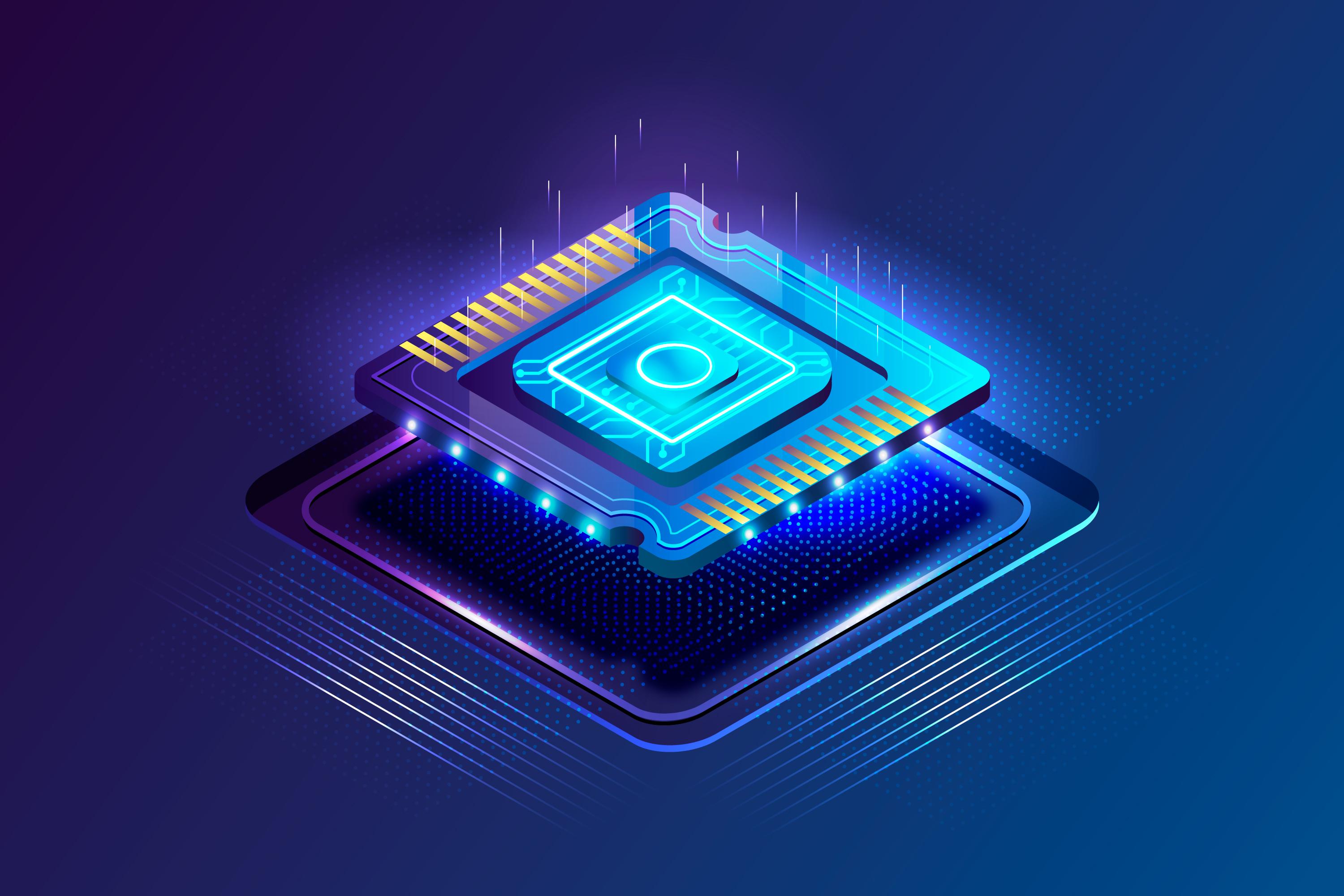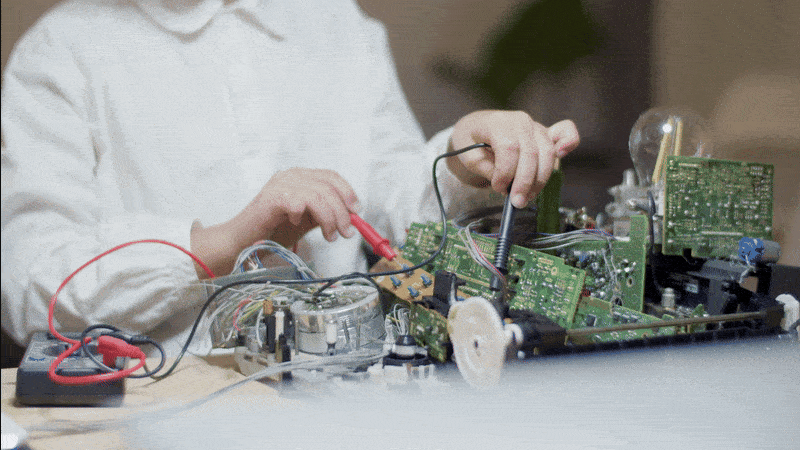_11zon.jpg) Introduction:
Introduction:
Artificial Intelligence (AI) and Machine Learning (ML) have become transformative technologies across various industries, revolutionizing how we interact with data and make informed decisions. The integration of AI and ML into Field-Programmable Gate Array (FPGA) design has opened new frontiers, enhancing performance, energy efficiency, and adaptability. In this blog, we will explore the synergistic relationship between AI, ML, and FPGA, delving into the emerging methodologies and real-world applications that are reshaping the landscape of FPGA design.
AI Acceleration in FPGAs: A New Paradigm
Machine learning (ML) and artificial intelligence (AI) have become disruptive technologies that are reshaping numerous sectors. AI-driven applications have demonstrated previously unheard-of skills in fields as diverse as healthcare, finance, and autonomous cars. Hardware accelerators are now necessary to fully utilize AI, which has given rise to FPGA-based AI acceleration, a new paradigm that is altering the FPGA design landscape.
Why FPGAs Need AI Acceleration:
Algorithms for AI and ML demand a lot of computation and processing capacity. Although conventional CPUs and GPUs have traditionally served as the workhorses for AI workloads, their shortcomings have necessitated the development of specialized hardware. Due to their innate parallel processing powers and adaptability to different workloads, Field-Programmable Gate Arrays (FPGAs) have risen to the challenge.
FPGA-based AI acceleration advantages:
High Performance: Compared to traditional CPUs and GPUs, FPGAs can process AI computations more quickly since they can work in parallel. In particular, real-time AI applications like robotics and autonomous cars benefit from this high performance.
Power Efficiency: AI accelerators built on FPGAs have excellent energy efficiency. In comparison to general-purpose processors, FPGAs can achieve higher performance per watt by tailoring hardware circuits to the needs of the algorithms.
Flexibility and Adaptability: Because FPGAs are reprogrammable, designers can tailor the hardware to a particular AI application. FPGAs are perfect for quickly growing AI applications because of their versatility, which enables quick upgrades and alterations.
Low Latency: Thanks to their on-chip resources, FPGAs speed up data transfers between memory and processor units. The need for real-time decision-making in AI jobs necessitates this low latency
Cost-Effectiveness: FPGAs offer a more cost-effective alternative with equivalent performance for AI acceleration, but designing specialized Application-Specific Integrated Circuits (ASICs) can be expensive and time-consuming.
High Performance: Compared to traditional CPUs and GPUs, FPGAs can process AI computations more quickly since they can work in parallel. In particular, real-time AI applications like robotics and autonomous cars benefit from this high performance.
Power Efficiency: AI accelerators built on FPGAs have excellent energy efficiency. In comparison to general-purpose processors, FPGAs can achieve higher performance per watt by tailoring hardware circuits to the needs of the algorithms.
Flexibility and Adaptability: Because FPGAs are reprogrammable, designers can tailor the hardware to a particular AI application. FPGAs are perfect for quickly growing AI applications because of their versatility, which enables quick upgrades and alterations.
Low Latency: Thanks to their on-chip resources, FPGAs speed up data transfers between memory and processor units. The need for real-time decision-making in AI jobs necessitates this low latency
Cost-Effectiveness: FPGAs offer a more cost-effective alternative with equivalent performance for AI acceleration, but designing specialized Application-Specific Integrated Circuits (ASICs) can be expensive and time-consuming.
Issues and Proposed Courses of Action:
Although FPGA-based AI acceleration has a lot of potential, there are still a number of issues to be solved. Hardware design and optimization for particular AI algorithms can be difficult and time-consuming. Adoption could be sped up by standardizing frameworks and tools to make FPGA design and programming easier.
The potential for AI acceleration on FPGAs is bright in the future. We may anticipate better performance, lower power usage, and better design tools as FPGA technology develops. Additionally, it will be simpler to integrate AI models into FPGA-based systems because of the expanding ecosystem of AI-specific IPs and libraries.
High-Level Synthesis for AI in FPGAs
FPGAs have become effective platforms for putting Artificial Intelligence (AI) and Machine Learning (ML) algorithms into practice. The typical use of hardware description languages (HDLs) in FPGA design, however, can be time-consuming and difficult. To solve these problems and realize the full potential of AI on FPGAs, High-Level Synthesis (HLS) offers a revolutionary method.
High-Level Synthesis (HLS) Benefits
By abstracting the difficulties of hardware-level implementation, HLS enables designers to create AI and ML algorithms in high-level programming languages like C/C++ or Python. This cuts down on development time tremendously and makes FPGA design accessible to software engineers with limited hardware knowledge. The design is automatically optimized for performance and resource use by HLS tools, which translate high-level code into hardware descriptions.
Using HLS to expedite AI inference
A computationally demanding activity in AI is inference, when a trained model generates predictions based on input data. FPGAs are ideal for accelerating inference processes due to their parallel processing capabilities. By using HLS tools to map neural networks onto FPGAs, real-time AI inference with minimal latency and power consumption is made possible.
Adaptability and Flexibility
Reconfigurability provided by FPGAs enables designers to instantly change the hardware architecture. By allowing quick iterations and changes to AI models, HLS further improves this versatility. FPGAs are much more adaptable for AI applications than fixed-function ASICs since they can add new algorithms without replacing the hardware and adjust to changing AI requirements.
Obstacles and Things to Think About
While HLS has many advantages, there are some drawbacks as well. High-level algorithms may not always transfer perfectly to FPGA hardware, necessitating manual adjustments. Additionally, HLS approaches and technologies are always changing, making it necessary for qualified engineers to use them efficiently.
Customizable AI Inference Engines
AI inference engines are essential for processing data and making predictions in AI applications. FPGAs offer unparalleled flexibility in designing customizable inference engines. FPGA designers can fine-tune the architecture, precision, and data flow to match the specific requirements of the AI model, optimizing resource utilization and achieving impressive inference speeds.
Real-Time Data Preprocessing with ML on FPGAs
ML algorithms often require extensive data preprocessing before training or inference. FPGA-based ML accelerators excel at data preprocessing tasks, thanks to their parallel processing capabilities. Designers can implement customized data preprocessing pipelines directly in hardware, reducing data transfer bottlenecks and accelerating overall ML performance.
Reconfigurable Neural Networks
One of the key advantages of FPGAs is their reconfigurability. This feature allows designers to dynamically adjust the neural network architecture to optimize performance for specific tasks or adapt to changing requirements. Reconfigurable neural networks enable flexible and efficient AI models that can be updated in real-time as the application demands.
AI at the Edge with FPGA
The proliferation of edge computing has propelled AI to the edge of networks, closer to the data source. FPGAs, with their low latency and low power consumption, are ideal for AI inference at the edge. By performing AI tasks on FPGAs, organizations can reduce data transfer and enhance privacy while enabling real-time decision-making in IoT devices and other edge applications.
Enabling Federated Learning on FPGAs
Federated Learning is a decentralized AI training approach where data is processed locally on devices, preserving data privacy. FPGAs are well-suited for federated learning as they can efficiently execute AI models on the device while protecting sensitive user data, a critical advantage for applications in healthcare, finance, and other privacy-sensitive sectors.
AI-Driven Hardware-Aware Design
AI is not just limited to the software domain; it has also become a tool for hardware-aware FPGA design. Machine Learning algorithms can be used to optimize FPGA architectures and routing, resulting in more efficient and power-aware FPGA designs. AI-driven hardware-aware design complements traditional FPGA design methodologies, leading to better performance and resource utilization.
Predictive Maintenance with FPGA-based AI
FPGAs' real-time processing capabilities and AI inference speed make them valuable assets in predictive maintenance applications. By analyzing sensor data and running AI algorithms on FPGA accelerators, organizations can detect equipment anomalies and predict maintenance requirements proactively, minimizing downtime and reducing operational costs.
Realizing AI-Driven Autonomous Systems
FPGA-based AI accelerators are instrumental in realizing autonomous systems such as self-driving cars and drones. These systems rely on fast and reliable AI processing to make real-time decisions in dynamic environments. FPGAs' reconfigurable nature also allows for rapid prototyping and testing, accelerating the development of advanced autonomous solutions.
Scalable AI Solutions with FPGA
FPGAs offer scalability, enabling AI solutions to adapt to changing workloads and accommodate evolving AI models. This flexibility is particularly beneficial in data centers and cloud environments where the demand for AI processing can fluctuate dramatically.
Energy-Efficient AI Inference:
Energy efficiency is a critical concern in AI deployment. FPGAs, with their ability to perform highly parallel computations with low power consumption, excel at energy-efficient AI inference, making them a preferred choice for AI at the edge and battery-powered devices.
AI in Network Security with FPGA
FPGA-based AI accelerators are finding applications in network security, where real-time analysis of network traffic is crucial. By running AI algorithms directly on FPGAs, organizations can detect and mitigate network threats quickly, ensuring robust security against cyberattacks.
Future Trends: AI and FPGA Convergence
The convergence of AI and FPGA technology is set to reshape the landscape of computing. As FPGA capabilities continue to advance and AI algorithms become more complex, we can expect even greater synergy between these technologies, driving further innovation and transformation across industries
Conclusion:
The fusion of Artificial Intelligence and Machine Learning with FPGA design has unlocked unprecedented possibilities for diverse industries. From real-time AI inference at the edge to customizable inference engines and hardware-aware design, FPGAs empower organizations to harness the full potential of AI and ML in their products and services. As these technologies continue to evolve, the synergy between AI, ML, and FPGA will shape the future of advanced, intelligent, and adaptable systems, revolutionizing the way we interact with technology.

Clock Gating vs Power Gating: Implementation, RTL Flow & Verification Guide
Learn how to implement clock gating and power gating with RTL design steps, backend changes, UPF flow, and a full verification checklist for efficient low-power VLSI design.
_11zon.jpg)
What to Do After Engineering? Why VLSIFIRST Leads Chip Design Careers
Discover why VLSIFIRST is becoming the top choice for engineering graduates pursuing VLSI and semiconductor careers. Explore job roles, growth, and industry-ready training benefits.

VLSI Career Roadmap for Engineering Graduates: Step-by-Step Guide
A complete VLSI career roadmap for engineering graduates. Learn skills, domains, tools, and steps to become a successful semiconductor engineer in the chip design industry.

Title: Top VLSI Career Paths for 2026 Graduates and Best Semiconductor Companies in India
Meta Description: Explore the top VLSI career options for 2026 engineering graduates and discover India’s best semiconductor companies for high-paying jobs. Learn about roles, skills, and top recruites

Why VLSI Engineers Must Care About Side-Channel Attacks, Secure Design, Verification, and Hardware Mitigation
Learn why VLSI engineers must prioritize side-channel attacks, secure design, verification, and mitigation to build trustworthy, resilient, and future-ready hardware systems.
Hours
Copyright 2025 © VLSI Technologies Private Limited
Designed and developed by KandraDigitalCopyright 2025 © VLSI Technologies Private Limited
Designed, Developed & Marketing by KandraDigital
